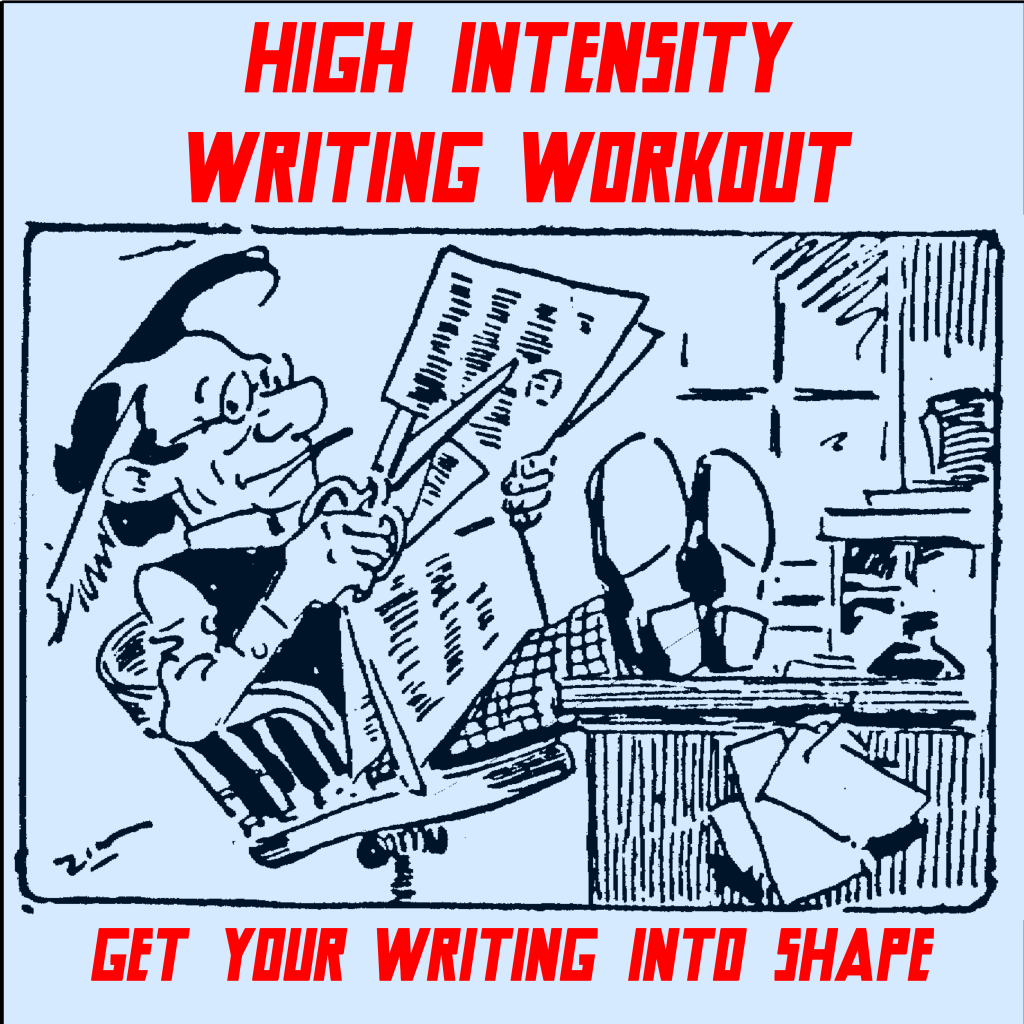High Intensity Writing Workout No. 2
One of the goals of any good writing is to pack a lot of information into as few words as possible. The biggest culprit in preventing this is the verb “to be.” The reason is simple: the verb is the lowest-common verb—it applies almost anywhere. But it is weak and flabby and applied too broadly. In writing I prefer to use it only when I’m trying to describe [current state of existence].
I do my best to eliminate the verb “to be” as much as possible in my books and stories. That’s not always easy to do since, sometimes, you do want to describe something’s current state of existence. Dialogue is also an exception to this drive. That’s not to say I still don’t try to cut the word out of dialogue, but using “to be” is part of dialogue. People just speak that way.
Here are some examples of what I try to eliminate:
1) Passive constructions. Most editors hate passives, so eliminating them is a good thing to do. Passive occurs when the object of the verb appears in a sentence before the subject.
Passive: The ball was hit by the bat.
Active: The bat hit the ball.
Dynamic: The bat smashed the ball
In eliminating “to be” we get rid of the passive construction, as you can see with the active example. The Dynamic example occurs because we find a more descriptive verb to substitute for the rather generic hit.
2) Lazy construction: One of the greatest overuses of “to be” is in description. The sentence, “The car was red,” is perfectly good and true. The car’s state of existence, as refers to color, is accurately describe as red. But we don’t need a verb there.
If we eliminate “to be” we get “The red car…” This isn’t a sentence, since it lacks a verb. So we build it out with “The red car sped around the corner.” Chances are very good that this one sentence would have been built out of the following paragraph: “The car was red. It was going fast. It took the corner quickly.” Granted, that’s how a 7 year old would write it. An adult might well expand on our simple example with “The red car screeched around the corner, smoke billowing from its tires.” Much more visual, and even auditory, for one less word than our little paragraph.
3) Distancing: A sentence like “The man was writhing on the ground,” is perfectly good, save that adding “to be” eliminates the immediacy of what’s going on. Now, if the narrator is the sort of person who would distance himself, that’s fine. Or if circumstances put her in a position where she would distance herself, that’s also fine (as if she were at a distance, using binoculars or a closed circuit TV system, or is reviewing video of a previous act). In the cases where we want the reader right in there, though, eliminating “to be” makes things more immediate.
Distant: The man was writhing on the ground.
Immediate: The man writhed on the ground.
Intimate: The writhing man’s motion churned blood and dust into ochre mud.
True, Distancing and Lazy Construction are actually the same deal, but the use of another verb in there complicates things and provides more solutions in the former situation.
The workout for this week is simple. Take any story or a chapter of same that you’ve written, and go through and eliminate* the verb “to be.” Print the piece out and just circle all the times you use it. You can even use your computer to count the instances of is/was/be/been in the sample before you do any editing, and again after you make the changes. Substitute the most dynamic verb or most intimate construction you can. Don’t worry about the piece seeming overwritten–leaning it back out again will be easier than building it up.
Though your overall word count won’t increase too much, what you’ll find is that your text is much richer. Your readers will be getting more bang for their buck, which provides the kind of value which will bring readers back time after time.
*This exercise could be seen as a contravention of my dictum that you should never rewrite before you finish a piece. So, use a piece that you’ve finished. Or, in spotting the use of “to be” in a current work, use that as a teaching tool to get you to eliminate the word as you go forward. With a bit of practice, you’ll clip “to be” without thinking about it even as you lay down the first draft.
©2015 Michael A. Stackpole
________________________
If you’re serious about your writing, you’ll want to take a look at my book, 21 Days to a Novel. It’s a 21 day long program that will help you do all the prep work you need to be able to get from start to finish on your novel. If you’ve ever started a book or story and had it die after ten pages or ten chapters, the 21 Days to a Novel program will get you past the problems that killed your work. 21 Days to a Novel covers everything from characterization to plotting, showing you how to put together a story that truly works.



 18. Feb, 2015
18. Feb, 2015 








Comments are closed.